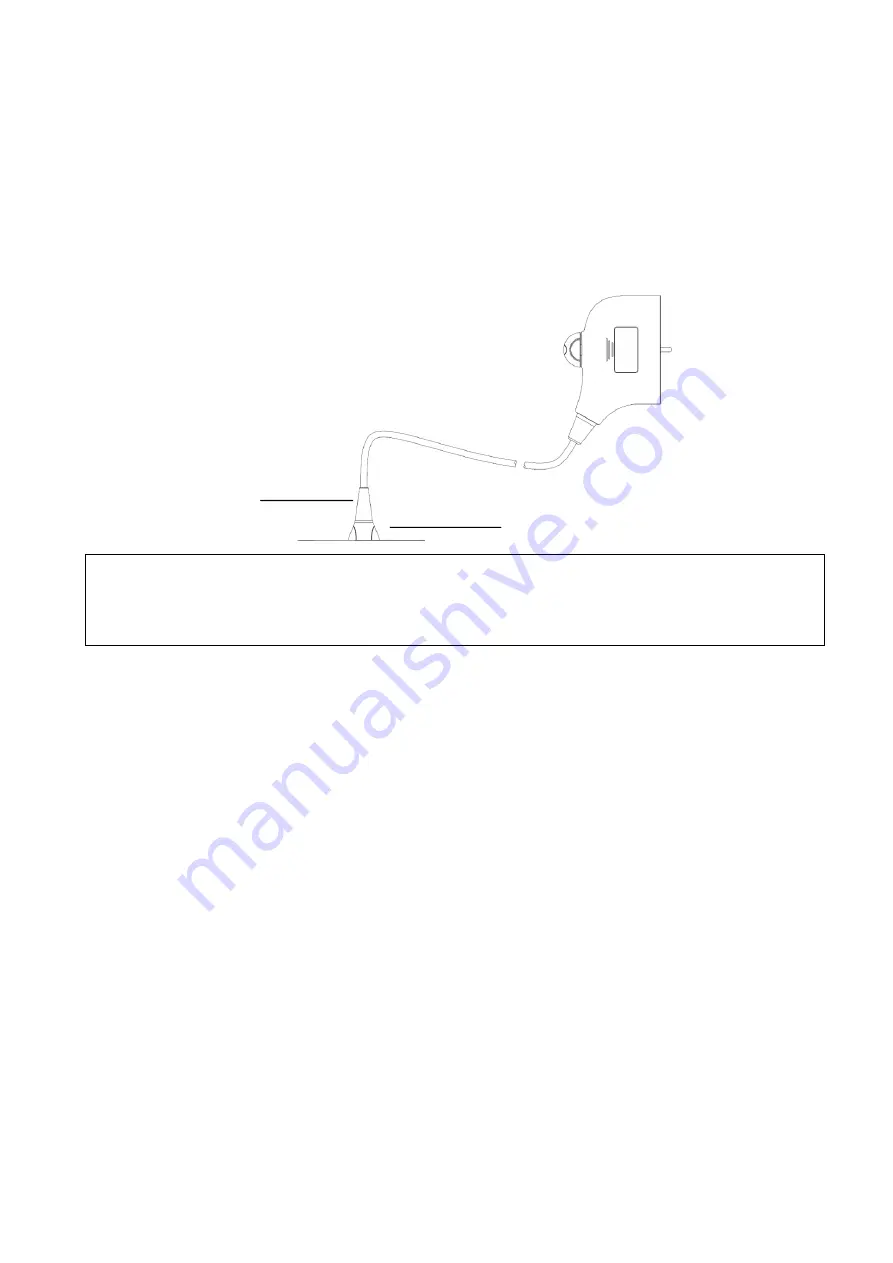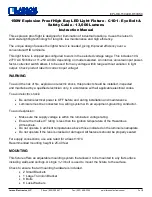
Probes and Biopsy 13-11
Soak the transducer into the disinfectant solution for the shortest time the manufacturer
recommends (for example, the shortest time recommended by the manufacturer for soaking
Cidex OPA is 12 minutes).
Follow local regulations when selecting and using the disinfectant.
3. Rinse the transducer with plenty of sterile water (about 2 gallons) for at least 1 minute to remove all
chemical residues on it. Or, follow the rinsing method recommended by the disinfectant
manufacturer to rinse the transducer.
4. Wipe off the water on the transducer with sterile cloth or gauze after rinsing it.Do not dry the
transducer by heating.
NOTE:
1.
Observe the graph here carefully to immerse the transducer. Only soak parts of the
transducer below the strain relief.
2.
Repeated disinfection will eventually damage the probe, please check the probe
performance periodically.
Compatible Disinfectants
For the disinfectants information, please refer to Disinfectant Compatible Chart.
13.1.6 Storage and Transportation
When all examinations for the day have been completed, confirm that the probe is in good condition.
After disinfecting the probe, confirm that the probe is in good condition and stored in a suitable place.
1. To prevent the probe from being damaged, DO NOT store it in locations where it may be exposed to:
Direct sunlight or X-rays
Sudden changes in temperature
Dust
Excessive vibration
Heat generators
2. Store and transport the transducer C5-1U, P7-3U, L14-6WU, CW5s and CW2s under following
ambient conditions:
Ambient temperature: -20°C - 55°C
Relative humidity: 30% - 95% (no condensation)
Atmospheric pressure: 700 hPa - 1060 hPa
3. Transport the probes SP5-1U, V11-3HU, L11-3U, L9-3U, P10-4U, SC6-1U, C6-2GU and C11-3U under
the following conditions.
Ambient temperature: -20°C - 55°C
Strain relief
Probe handle
















































